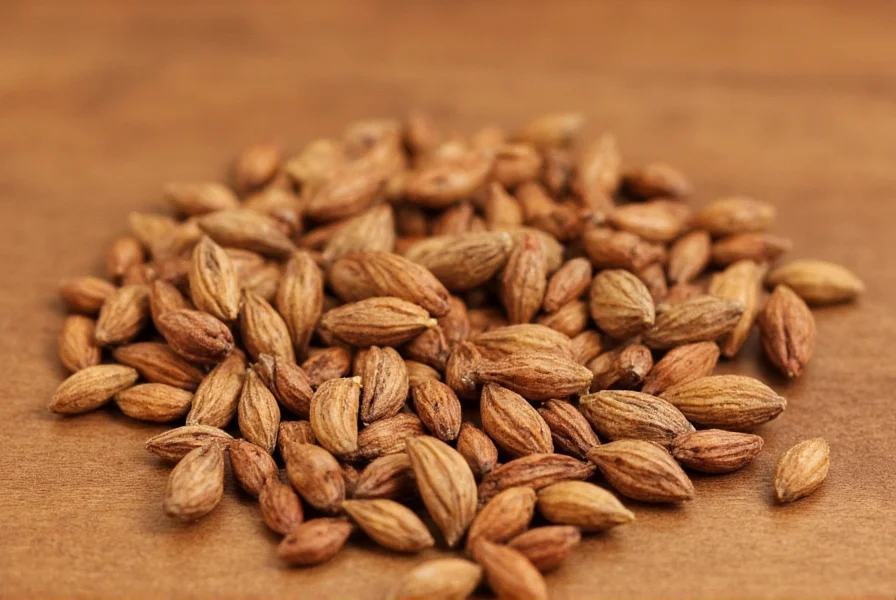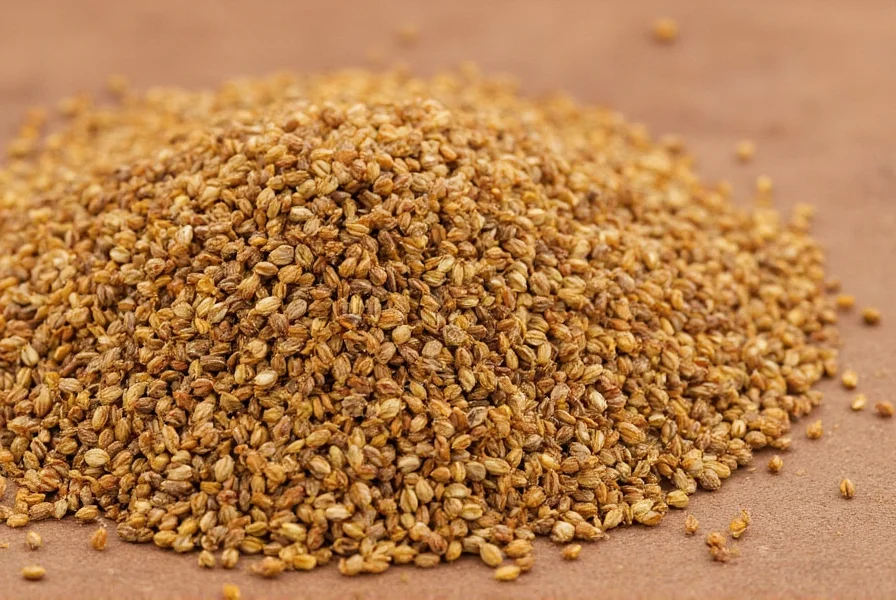Cumin and jeera refer to the exact same spice—Cuminum cyminum. Jeera is simply the Hindi and Urdu word for cumin, commonly used across South Asian cooking and traditional medicine systems. This small, crescent-shaped seed has been valued for thousands of years for both its distinctive earthy flavor and potential health properties.
When exploring the world of spices, many people wonder about the difference between cumin and jeera. The straightforward answer is there is no difference—they are identical. The term “jeera” originates from Hindi and Urdu, while “cumin” comes from the Latin “cuminum” and Greek “kyminon.” This linguistic distinction often causes confusion, especially for those new to international cuisines.
Historical Roots and Global Journey
Cumin has been cultivated for over 5,000 years, with archaeological evidence tracing its use to ancient Egypt, where it was found in tombs including that of Pharaoh Tutankhamun. The spice traveled along trade routes to India, the Middle East, and eventually Europe. In India, it became deeply integrated into culinary and Ayurvedic traditions, earning the name “jeera.”

Botanical Characteristics
Cuminum cyminum is a flowering plant in the Apiaceae family, related to parsley, carrots, and coriander. The spice we use comes from the dried seeds of this plant. Each seed measures approximately 3–6 mm long and features a characteristic longitudinal ridges. When toasted, cumin seeds release a warm, earthy aroma with subtle citrus notes.
Culinary Applications Worldwide
Cumin's versatility makes it a cornerstone spice across multiple culinary traditions:
| Region | Common Uses | Preparation Method |
|---|---|---|
| South Asia | Curries, rice dishes, chutneys | Dry roasted or tempered in hot oil |
| Middle East | Hummus, falafel, spice blends | Ground and mixed with other spices |
| Mexico/Central America | Chili, tacos, mole sauces | Often combined with chili powder |
| Mediterranean | Bread, cheese, stews | Added to dough or braising liquids |
Nutritional Profile and Health Considerations
A single tablespoon (6g) of cumin seeds contains approximately:
- 23 calories
- 1.4g protein
- 1.3g fat
- 2.6g carbohydrates
- 0.8g fiber
- Significant amounts of iron (23% of daily value), manganese, and calcium
Research suggests potential health benefits associated with cumin consumption, though more comprehensive human studies are needed. Preliminary studies indicate cumin may support digestion, help regulate blood sugar levels, and possess antioxidant properties. Many traditional medicine systems, including Ayurveda, have long recommended cumin water (jeera water) for digestive health.
Practical Kitchen Guidance
For optimal flavor and potential health benefits, consider these practical tips:
Selection and Storage
Whole cumin seeds retain their flavor significantly longer than ground cumin. Store seeds in an airtight container away from light and heat. Properly stored, they maintain quality for 3–4 months, while ground cumin typically lasts only 2–3 months.
Enhancing Flavor Through Toasting
Dry toasting cumin seeds in a skillet over medium heat for 1–2 minutes dramatically enhances their aromatic compounds. This simple technique unlocks deeper flavors that elevate any dish featuring cumin jeera. Be careful not to burn the seeds, as this creates bitterness.
Different Forms and Their Uses
While whole seeds work best for tempering and slow-cooked dishes, ground cumin integrates more readily into marinades and spice rubs. Some chefs prefer to grind their own cumin from whole seeds immediately before use for maximum flavor impact.

Cultural Significance Beyond the Kitchen
In many cultures, cumin carries symbolic meaning beyond its culinary applications. In ancient Rome, it was considered a symbol of thrift. In some traditional wedding ceremonies across India, cumin seeds were included in ritual offerings. The spice's journey from ancient trade routes to modern supermarket shelves demonstrates its enduring global appeal.
Safety and Considerations
Cumin is generally recognized as safe when consumed in typical culinary amounts. However, those with allergies to plants in the Apiaceae family should exercise caution. Consuming extremely large quantities may interact with certain medications, particularly those affecting blood sugar. As with any dietary change, consult with a healthcare provider if you have specific health concerns.
Conclusion
Understanding that cumin and jeera are the same spice opens doors to exploring global cuisines with greater confidence. Whether you're preparing traditional Indian curry, Mexican chili, or Middle Eastern falafel, this versatile seed enhances dishes with its distinctive earthy warmth. By recognizing its historical significance, nutritional profile, and proper usage techniques, home cooks can maximize both the flavor and potential health benefits of this ancient spice.
Is cumin the same as jeera?
Yes, cumin and jeera refer to the exact same spice (Cuminum cyminum). Jeera is simply the Hindi and Urdu word for cumin, commonly used in South Asian cooking and traditional medicine systems.
What are the health benefits of consuming cumin daily?
Cumin contains iron, manganese, and antioxidants. Some studies suggest it may support digestion, help regulate blood sugar, and have anti-inflammatory properties. However, most research has been preliminary or conducted on animals, so more human studies are needed to confirm these potential benefits.
How should I store cumin to maintain freshness?
Store whole cumin seeds in an airtight container away from light and heat. Properly stored, they maintain quality for 3-4 months. Ground cumin loses flavor more quickly and typically lasts only 2-3 months. For maximum freshness, consider toasting and grinding whole seeds as needed rather than purchasing pre-ground cumin.
Can I substitute cumin for caraway seeds?
While cumin and caraway come from related plants and share some flavor characteristics, they are not perfect substitutes. Cumin has a warmer, earthier flavor with citrus notes, while caraway is more floral with anise-like qualities. In a pinch, you can substitute one for the other, but expect a different flavor profile in your finished dish.
What's the difference between black cumin and regular cumin?
Black cumin (Nigella sativa) is a completely different plant from regular cumin (Cuminum cyminum). Black cumin seeds are smaller, black, and have a more pungent, oregano-like flavor. They're commonly used in Middle Eastern and Indian cooking but should not be confused with regular cumin/jeera.
Frequently Asked Questions
Is cumin the same as jeera?
Yes, cumin and jeera refer to the exact same spice (Cuminum cyminum). Jeera is simply the Hindi and Urdu word for cumin, commonly used in South Asian cooking and traditional medicine systems.
What are the health benefits of consuming cumin daily?
Cumin contains iron, manganese, and antioxidants. Some studies suggest it may support digestion, help regulate blood sugar, and have anti-inflammatory properties. However, most research has been preliminary or conducted on animals, so more human studies are needed to confirm these potential benefits.
How should I store cumin to maintain freshness?
Store whole cumin seeds in an airtight container away from light and heat. Properly stored, they maintain quality for 3-4 months. Ground cumin loses flavor more quickly and typically lasts only 2-3 months. For maximum freshness, consider toasting and grinding whole seeds as needed rather than purchasing pre-ground cumin.
Can I substitute cumin for caraway seeds?
While cumin and caraway come from related plants and share some flavor characteristics, they are not perfect substitutes. Cumin has a warmer, earthier flavor with citrus notes, while caraway is more floral with anise-like qualities. In a pinch, you can substitute one for the other, but expect a different flavor profile in your finished dish.
What's the difference between black cumin and regular cumin?
Black cumin (Nigella sativa) is a completely different plant from regular cumin (Cuminum cyminum). Black cumin seeds are smaller, black, and have a more pungent, oregano-like flavor. They're commonly used in Middle Eastern and Indian cooking but should not be confused with regular cumin/jeera.











 浙公网安备
33010002000092号
浙公网安备
33010002000092号 浙B2-20120091-4
浙B2-20120091-4